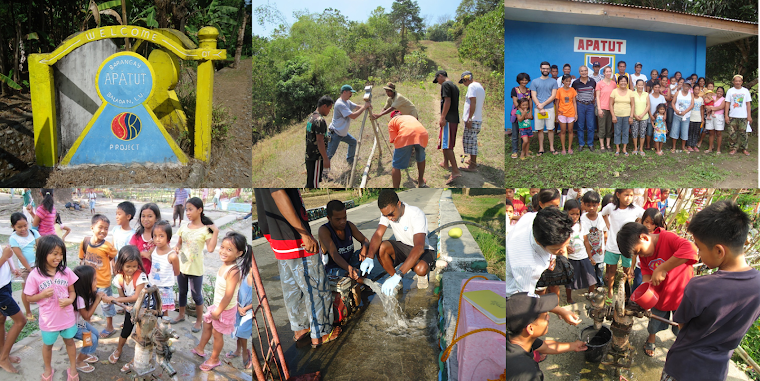Often as engineers, we can be found focusing overwhelmingly on the technical issues surrounding a particular problem that we are presented with. With good reason, of course - we understand well that we need to arrive at practical solutions by leveraging our tool box of scientific principals, empirical formulas, and our trusty skills in mathematics. Unfortunately, this can at times leave us embodying somewhat-robotic, out-of-touch-with-reality engineer stereotypes.
As such, incredibly interesting things happen as the result of spending five days with the real life human beings in Apatut, away from our computer, spread sheets, CAD, hydrologic modeling software, databases, etc. Traveling to Apatut and having the opportunity to speak with members of nearly every household in the village has vastly opened my eyes to the human aspect of this project.
At first, one of the most apparent human issues made known to us was the community's frustration with the timeline of the 'Water for Life' project. While they were happy to have us back, we were often asked why the project was not yet complete: "why can't we start building the water system?", "why can't you stay longer to finish the job?". We understand the technical and logistical hurdles of 'Water for Life', but explaining these to villagers who are relying on us is a difficult task.
Speaking with the members of the community also helped shape our understanding of their opinion of some potential long term solutions. One prominent feeling was that of concern over the cost of expanding the Balaoan Water District water into the community. Virtually everyone who spoke about that option said it would be financially out of reach. In general, the community was interested in having a reliable and clean water system as soon as possible, with reasonable usage fees. In terms of short term solutions, villagers were mostly receptive to solar disinfection, but explained that it would be difficult get a hold of clear bottles that they could keep.
For me, speaking face-to-face with community members amplified the reality of the problem: each day people in Apatut have no choice but to drink contaminated water. Regardless of if they are old, young, pregnant, already sick - there is no option but pathogen-laden (and probably carcinogen-laden) drinking water. Internalizing this reality has instilled within me a sense of urgency to help complete this project, and empathy for other communities like Apatut.
Below are photos taken during our information exchange seminars held with each Sector in Apatut in November of 2013 .
 |
Axel translates as Shelley explains how solar disinfection
can help sanitize Apatut's water supply in the short term |
 |
| Members of Sector 2 during their seminar with EWB travelers |
 |
| Members of Sector 3 |
 |
| Members of Sector 1 listening during their seminar with EWB travelers |
 |
| Shelley presenting to members of Sector 6 |
 |
| Shelley educating members of Sector 7 about the history and current status of the 'Water for Life' project |
 |
| Fluffy also came to express her concerns during her Sector's seminar with EWB |
 |
| Sector 5 seminar held in the community's Day Care Center |



